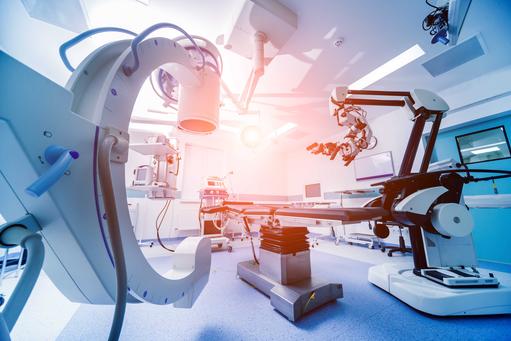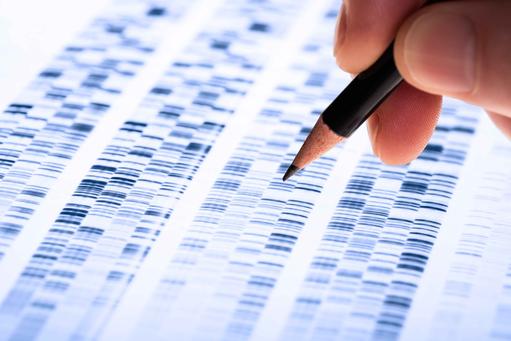Tag
Directory:
Tags:

|
|
|
|
|
Directory:
Tags:

|
Directory:
Tags:

|
|
|
Directory:
Tags:

- Many people still view China as a ‘copycat’ economy, but this is rapidly changing
- China is:
- Pursuing a multi-billion dollar-15 year strategy to become a world leader in genomic engineering and personalized medicine
- Systematically upgrading and incentivizing its large and growing pool of scientists who are making important breakthroughs in the life sciences
- Empowering and encouraging state owned and private life science companies to own and control the capacity to transform genomic, clinical and personal data into personalized medicines
- The difference in national approaches to individualism and privacy confers an added competitive advantage to China and its life science ambitions
- China’s approach to individualism and privacy issues could have implications for society
The global competition to translate genomic data into personal medical therapies
Uneven playing field
Genomic engineering and precision medicine have the potential to revolutionize how we prevent and treat intractable diseases. Who owns the intellectual property associated with genomic engineering, and who first exploits it, will reap significant commercial benefits in the future. However, genomic technologies are not like any other. This is because genetically modifying human genomes could trigger genetic changes across future generations. Misuse of such technologies therefore could result in serious harm for individuals and their families. On the other hand, over regulation of genomic engineering could slow or even derail the prevention and treatment of devastating and costly diseases. Establishing a balance, which supports measures to mitigate misuse of genomic technologies while allowing the advancement of precision medicine is critical. However, this has proven difficult to establish internationally.
Chinese scientists have crossed an ethical line
Chinese culture interprets individualism and privacy differently to American culture, and therefore China responds differently to certain ethical standards compared to the US and some other Western nations. Indeed, national differences were ignited in 2012 when Chinese researchers published their findings of the world’s first endeavors to modify the genomes of human embryos to confer genetic resistance to certain diseases. Because such modifications are heritable critics argued that the Chinese scientists crossed a significant ethical line, and this was the start of a “slippery slope”, which could eventually lead to the creation of a two-tiered society, with elite citizens genetically engineered to be smarter, healthier and to live longer, and an underclass of biologically run-of-the-mill human beings.
International code of conduct called for but not adhered to
2 prominent scientific journals, Nature and Science, rejected the Chinese research papers reporting world-first scientific breakthroughs on ethical grounds. Subsequently, Nature published a note calling for a global moratorium on the genetic modification of human embryos, suggesting that there are “grave concerns” about the ethics and safety of the technology. 40 countries have banned genetically modifying human embryos. In 2016, a report from the UK’s Nuffield Council on Bioethics stressed the importance of an internationally agreed ethical code of conduct before genomic engineering develops further.
In 2017 an influential US science advisory group formed by the National Academy of Sciences and the National Academy of Medicine gave ‘lukewarm’ support to the modification of human embryos to prevent, “serious diseases and disabilities” in cases only where there are no other “reasonable alternatives”. The French oppose genomic modification, the Dutch and the Swedes support it, and a recent Nature editorial suggested that the EU is, “habitually paralyzed whenever genetic modification is discussed”. In the meantime, clinical studies, which involve genomic engineering, are advancing at a pace in China.
With regard to genome testing, western human rights activists have warned that China is targeting vulnerable groups and minorities to help build vast genomic databases without appropriate protection for individuals. Those include migrant workers, political dissidents and ethnic or religious minorities such as the Muslim Uighurs in China's far western Xinjiang region. Xinjiang authorities are reported to have invested some US$10bn in advanced sequencing equipment to enhance the collection and indexing of these data.
Different national interpretations of ‘individualism’
‘Individualism’, which is at the core of ethical considerations of genomic engineering, is challenging to define because of its different cultural, political and social interpretations. For example, following the French Revolution, individualisme was used pejoratively in France to signify the sources of social dissolution and anarchy, and the elevation of individual interests above those of the collective. The contemporary Chinese interpretation of individualism is similar to the early 19th century French interpretation. It does not stress a person’s uniqueness and separation from the State, but emphasizes an individual’s social; contract and harmony with the State. By contrast, American individualism is perceived as an inalienable natural right of all citizens, and independent of the State.
Further, American individuals are actively encouraged to challenge and influence the government and its regulatory bodies, whereas in China citizens are expected to unquestionably support the State. China is a one party state, where individuals generally accept that their government and its leaders represent their higher interests, and most citizens therefore accept the fact that they are not expected to challenge and influence policies determined by the State and its leaders. This difference provides China with a significant competitive advantage in its endeavors to become a world leader in the life sciences,
By 2025, some 2bn human genomes could be sequenced. This not only presents ethical challenges, but also significant human capital challenges. The development of personalized medicines is predicated upon the ability to aggregate and process vast amounts of individual genomic, physiological, health, environmental and lifestyle data. This requires next generation sequencing technologies, smart AI systems, and advanced data managers of which there is a global shortage. Thus, the cultivation and recruitment of appropriate human capital is central to competing within the rapidly evolving international genomic engineering marketplace. The fact that China has a more efficacious strategy to achieve this than the US and other Western democracies provides it with another significant competitive advantage.
STEM graduates
Since the turn of the century, China has been engaged in a silent revolution to substantially increase its pool of graduates in science, technology, engineering and mathematics (STEM), while the pool of such graduates in the US and other Western democracies has been shrinking. In 2016, China was building the equivalent of almost one university a week, which has resulted in a significant shift in the world's population of STEM graduates. According to the World Economic Forum, in 2016, the number of people graduating in China and India were respectively 4.7m and 2.6m, while in the US only 568,000 graduated. In 2013, 40% of all Chinese graduates finished a degree in STEM, over twice the share of that in US universities. In 2016, India had the most graduates of any country worldwide with 78m, China followed closely with 77.7m, and the US came third with 67m graduates.
University education thriving in China and struggling in the West
In addition to China being ahead of both the US and Europe in producing STEM graduates; the gap behind the top 2 countries and the US is widening. Projections suggest that by 2030 the number of 25 to 34-year-old graduates in China will increase by a further 300%, compared with an expected rise of around 30% in the US and Europe. In the US students have been struggling to afford university fees, and most European countries have put a brake on expanding their universities by either not making public investments or restricting universities to raise money themselves.
The increasing impact of Chinese life sciences
China's rapid expansion in STEM graduates suggests that the future might be different to the past. Today, China has more graduate researchers than any other country, and it is rapidly catching up with the US in the number of scientific papers published. The first published papers to describe genetic modifications of human embryos came from Chinese scientists.
Further, according to the World Intellectual Property Organization, domestic patent applications inside China have soared from zero at the start of the 21st century to some 928,000 in 2014: 40% more than the US’s 579,000, and almost 3 times that of Japan’s 326,000.
China’s strategy to reverse the brain drain
Complementing China’s prioritization of domestic STEM education is its “Qianren Jihua” (Thousand Talents) strategy. This, established in the wake of the 2008 global financial crisis to reverse China’s brain drain, trawls the world to seek and attract highly skilled human capital to China by offering them incentives. Qianren Jihua’s objective is to encourage STEM qualified Chinese ex patriots to return to China, and encourage those who already reside in China to stay, and together help create an internationally competitive university sector by increasing the production of world-class research to support China’s plans to dominate precision medicine and life sciences.
In 2016, China announced plans for a multi-billion dollar project to enhance its competitiveness by becoming a global leader in molecular science and genomics. China is committed to supporting at least three principal institutions, including the Beijing Genomics Institute (BGI), to sequence the genomes of many millions.
In addition to investments at home, China also is investing in centers similar to that of BGI abroad. Over the past 2 years China has invested more than US$110bn on technology M&A deals, which it justifies by suggesting that emerging technologies are, “the main battlefields of the economy”. Early in 2017 BGI announced the launch of a US Innovation Center, co-located in Seattle and San Jose. The Seattle organization is focused on precision medicine and includes collaborations with the University of Washington, the Allen Institute for Brain Science, and the Bill and Melinda Gates Foundation. The San Jose facility, where BGI already has a laboratory employing over 100, supports its ambitions to develop next-generation sequencing technologies, which until now have been dominated by the US sequencing company Illumina.
Changing structure of China’s economy
Some suggest that China’s rise on the world life sciences stage will be short lived because the nation is in the midst of a challenging transition to a slower-growing, consumption-driven economy, and therefore will not be able to sustain such levels of investment; and this will dent its ambition to become a global player in genomic science. An alternative argument suggests slower growth forces China to act smarter, and this is what drives its precision medicine ambitions.
Between 1985 and 2015, China’s annual GDP rose, on average, by 9.4%. Fuelling this growth was a steady supply of workers entering the labour force and massive government led infrastructure investments. Now, because of China’s ageing population, its labour capacity has peaked and started to decline. Without labour force expansion, and investment constrained by debt, China is obliged to rely more heavily on innovation to improve its productivity. And this drives, rather than slows, China’s strategy to become a world leader in genomic technologies and personalized medicine.
China’s economic growth is slowing, but its production of scientific research is growing
Although China’s economy is slowing, it is still comparatively large. In 2000, China spent as much on R&D as France; now it invests more in genomics than the EU, when adjusted for the purchasing power of its currency. Today, China produces more research articles than any other nation, apart from the US, and its authors’ feature on around 20% of the world’s most-cited peer reviewed papers. Top Chinese scientific institutions are breaking into lists of the world’s best, and the nation has created some unparalleled research facilities. Even now, every 16 weeks China produces a Greece-size economy, and doubles the entire size of its economy every 7 years. Today, China has an economy similar in size to that of the US, and most projections suggest that, over the next 2 decades, China’s economy will dwarf that of the US.
China is cloning its successful strategy to own and control significant mineral and mining rights to the life sciences. Over the past 20 years China has actively pursued mining deals in different global geographies, and now controls significant mining rights and mineral assets in Africa and a few other countries. This allows China to affect the aggregate supply and world market prices of certain natural resources. Now, China is cloning this commercially successful strategy to the life sciences, and has empowered and encouraged a number of state owned and private companies to own and control genomic engineering and precision medicine. China’s single-minded determination to become a world leader in life sciences, and its interpretation of individualism and privacy issues could have far reaching implications for the future of humanity.
Directory:
Tags:

|
Directory:
Tags:

|
Directory:
Tags:
|
Directory:
Tags:

|















